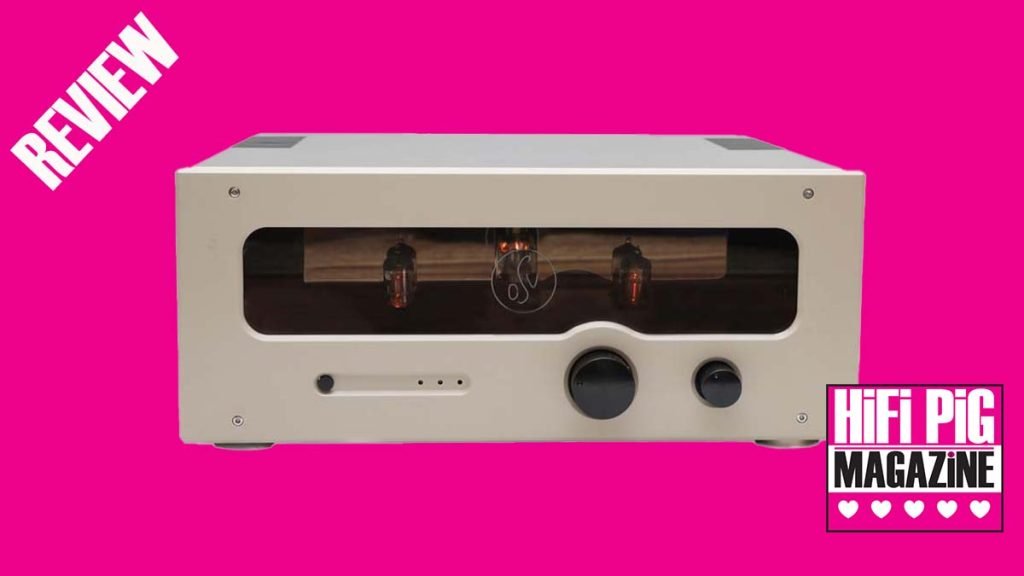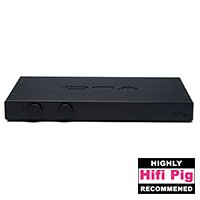OSV HT 50 AMPLIFIER REVIEW
The OSV HT 50 integrated amplifier comes from Poland, costs £6500 and is a hybrid valve and solid-state design. Janine takes a listen.
I have a passion for valve amplification, it started with my aged Leak Stereo 20 and various Audio Research preamps collected and enjoyed over the years. To be sent another from a company I have to admit I know very little about was going to be an exciting proposition for me, especially when it only has three valves (well, the mirror behind the tubes makes it look like 6. Clever!). After all, I am used to 8 valves in the Leak. The OSV HT 50, coming in at £6500, is no ordinary integrated whether in design, looks, or performance. I was particularly keen to review this as it is made in Poland, a country producing a lot of serious HiFi kit these days, owning as I do the excellent Pre-Audio tangential turntable GL-1102N.
OSV is a company from Katowice, 60km west of Kraków. Begun in 2018 as JK amplifiers it produced world-beating bass and guitar amplifiers, winning “Gear of the Year 2019″ from The Bass Player Magazine. Turning to the HiFi market they are now seeking to gain just as good a reputation.
Daniel Sarna is the designer and engineer with Simon Pyzinski as sales manager. As Simon told me, “The first step was instrument amplification like bass and guitar amps; the next natural step became a studio-grade amplifier for music postproduction. We felt extremely encouraged back then and thought that we may be doing something right. We stopped following big companies and started inventing something special, experimenting with different approaches when it came to building amplifiers”. Daniel and Simon are both from the Silesia; near the borders of Poland and Czechia, hence the name OSV (in German: oberschlesische verstaerkers, “upper-Silesian amplifiers”). Importantly, too, both are musicians which is always a good background when designing audio, as Simon told me “For many years we’ve been looking for the right kind of sound, which is not choked, and you never get tired of listening to it”. Should be a good review, then.

BUILD QUALITY AND FEATURES OF THE OSV HT 50 AMPLIFIER
This is a very individual and minimalist-looking amplifier with a mottled grey finish and a large transparent front panel displaying the valves. There are only two knobs on the front (volume and source) and a standby button hidden to the left of a smaller transparent area that houses two indicators to let you know what’s happening. The main on-off switch is at the rear. Use the dinky matching metal remote or that little front button to turn it from standby “red” display to flashing “orange” whilst it sets itself up and then goes “green” when all is ready. Like the amplifier, the small solid aluminium remote is also minimalist with just power, volume, and mute buttons.
The amplifier is extremely well made coming as standard in grey, but they can paint it in any RAL-defined paint you would like to match your car or handbag. Additionally, they will allow customers to experiment with a variety of other valves that work. For example, the website shows 2 6J9PE and 1 x 6SL7, but the review sample had two 6Z52P and one 6SL7 tubes. All valves used are from JJ. Supported pentodes include 6j52p, 6j9p, e180f, ef86, and triodes are 6SL7, 6SN7, 6P9S, as well as any other pin-compatible tubes. Every combination will sound different as Daniel told me; “there are a lot of possibilities for having fun when swapping them”.
This is a very simply designed hybrid amplifier. After the input selector is the motorised Alps potentiometer, then the voltage swing valve preamp stage, and finally an AB-class bipolar configuration transistor stage working as a current buffer, producing 50WRMS into 8Ω or 75WRMS into 4Ω. The preamp is an SRPP (shunt-regulated push-pull amplifier) design, and there is only one high-quality Jantzen Audio Superior Z-Cap capacitor in the path of the sound to keep the music as pure as possible. There are just 3 RCA inputs on the sparsely laid-out rear, with excellent speaker connectors. If you wish for Bluetooth, then that is an available option and will take the place of one of the RCA inputs. The review sample only had the line-level RCA inputs, and for the review I used vinyl, reel-to-reel and FLAC/DSD sources.
SOUND QUALITY
This class AB integrated takes under 30 seconds to get itself ready to play music, though I gave it longer before I started to take to reviewing, as I found it was at its best after around 20 minutes. I also found it to be a very quiet amplifier. It gave a very smooth and welcoming sound, though still having all the detail you’d expect from a transistor output stage. The title track from ‘All the Time in the World’ from Louis Armstrong had smooth strings accompanying his customary gritty voice, showing the amplifier didn’t hide anything from the listener, the valves and transistors working brilliantly in tandem. This was a very detailed performance with an especially powerful piano accompaniment. Whilst this is an extremely musical player it could also capture brilliantly all the idiosyncrasies in music, including sensitivities or bursts of anger in the music. This was the case in ‘Love over Gold’ from Dire Straits, an old favourite of mine released in 1982. The OSV was sensitive to the atmosphere and gentle performance at the start, but still had plenty of reserve for all those moments of anger later in the music. The amplifier was unfussed by anything I threw at it; the music performing in an equally unfussed way. I could listen to the amplifier as long as I wanted without any fatigue, something that Daniel had wanted to achieve when he designed it. The only complaint I had all the time that I had the amplifier was that when using the remote the button was so sensitive that a single quick press changed the volume 2dB or more. However, having a physical Alps potentiometer meant you could still get up off your seat and manually get it to the level you want if necessary, unlike my resident transformer passive MFA Baby Reference preamp which is stepped at 2dB so I can never quite get the ideal level!

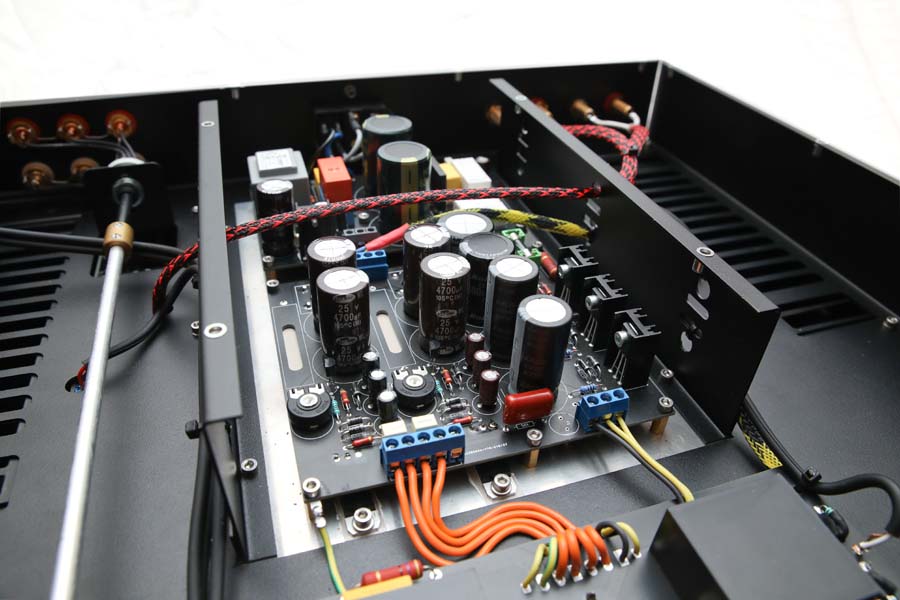
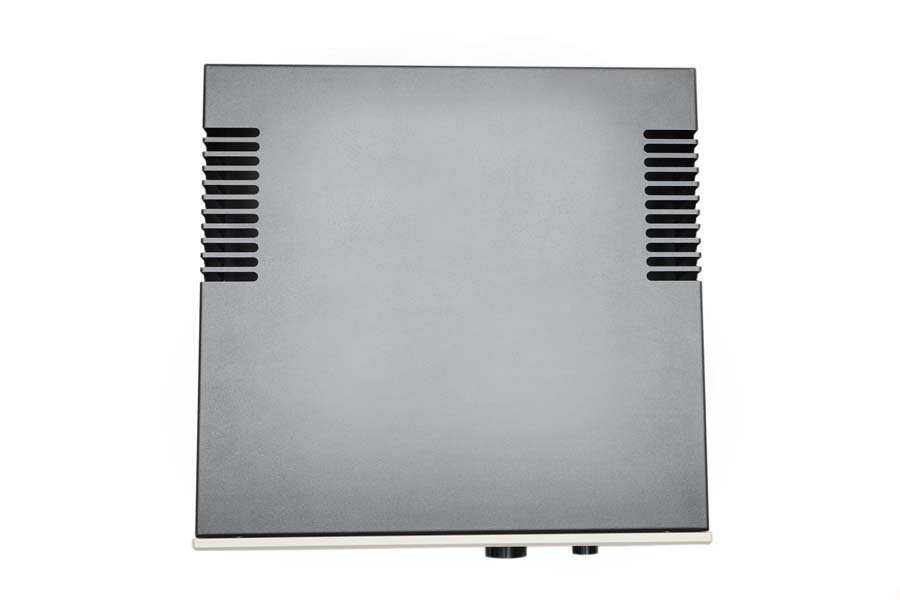
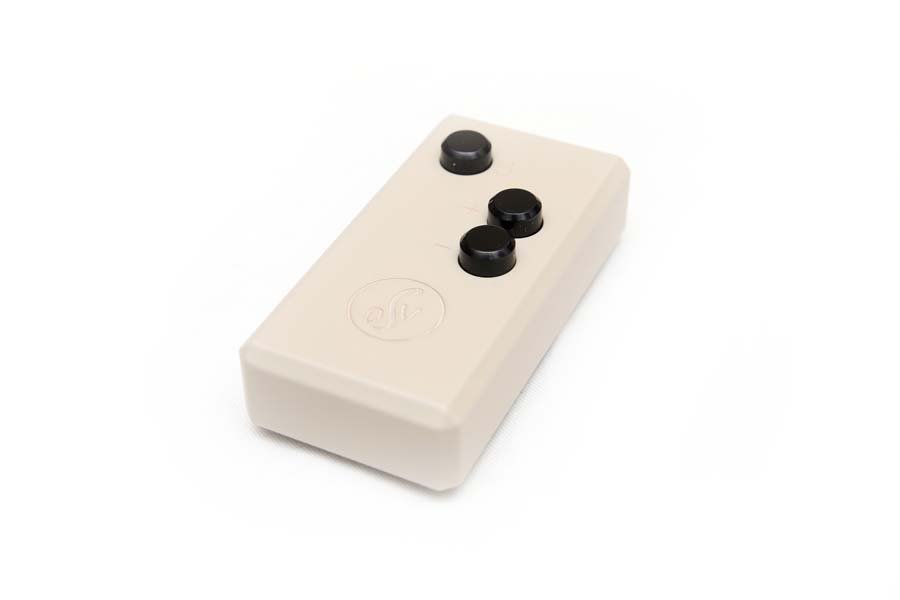
I decided to listen to some jazz and one of my favourites; the much-underrated jazz pianist Dudley Moore ‘Live from an Aircraft Hanger’, which was a special recording taped at the Royal Albert Hall in 1992 (rather than an Easyjet hanger as its name suggests). Proceeds from the concert went to the Dudley Moore Research Fund for Progressive Supranuclear Palsy, a condition he later died of in 2002. This is an album of 24 tracks, including many of him telling jokes and introducing the music. Ideal for a review, then, with plenty of music, speech, audience, and atmosphere. The album included the BBC Concert Orchestra backing the Dudley Moore Trio. The performance was very clean, with good audience participation. Only the very tops and cymbals were not quite as clear as in my resident Synthesis Roma 98DC poweramp monoblocks. The bassline was very clear and rhythmical. “Moontime” was extremely musical and uncluttered. The piano was very well engineered with a bright and believable tone; this was the only album I played from a digital source and sounded amazingly believable. Strings spread across the soundstage with great depth and the amplifier separated the instruments into their allotted space between the speakers. Bass percussion bursts similarly gave a dramatic contrast to the sweet, silky smooth finger work on the piano from Dudley. This was a good performance by both Dudley and the amplifier.
‘Mirror to the Sky’ by Yes is the latest album from this Prog Rock band that formed back in 1968. Released in 2023 this LP is appropriately their 23rd album and I think is one of their best and mirrors many touches of the past from ace guitarist Steve Howe (more from him later). The OSV played this double album with plenty of passion and energy, just not quite matching my MFA/Synthesis package. Everything was brilliantly painted across the stage and with plenty of energy, almost matching the KT88’s of the Synthesis, though it did have a better bass end. Top-end cymbals weren’t quite as forward, though were still excellent. The use of valve pre and SS power is an old idea and works so well, as it does so here with musicality and sensitivity when it is needed and plenty of speed and power. Definition from all the instruments and vocals from Jon Davison were excellent.
Turning to classical music, this included Sibelius Symphony No1, Sir John Barbirolli, and the Hallé orchestra. The performance was very polite and clean as I would expect and Sibelius’s great melodies and warmth were here to the full. Violins were smooth and brass and woodwinds were detailed in their allotted seats. Performance was more Cappuccino than Americana.
Things got a little more exciting in Miles Davis’s “Kind of Blue” allowing the trumpet and saxophone to really show their talents through the HT 50. This was a very good performance with plenty of detail to the notes.
Steely Dan’s “Aja” is a jazzy pop number that just didn’t quite go as far as I had hoped with excitement, though everything was very natural and it captured the music accurately. It was the percussion that drew me to listen to this track, and the HT 50 was very clean, very accurate, and clearer than had been found in the Yes album.

Back to Steve Howe and this time with Martin Taylor in a guitar duet album called ‘Masterpiece Guitars’. This is a very detailed and brilliantly mic’d masterpiece of an album. The clarity from the guitars from this amplifier in “No Pedestrians” were excellent with great stereo-spread in this clearly Grappelli/Django Reinhardt inspired track. This amplifier gave a very effortless performance which at the same time didn’t mean it lost detail. You could easily get whisked away into the music and forget you were listening to HiFi. I just wish it could have taken me just a little further, though for the price this was an excellent performer and heartily recommended.
CONCLUSION
This was no ordinary amplifier, not just in its appearance. The HT 50 could whisk you off to the rock concert or concert hall with equal passion and keep you entertained for hours. Everything was there that you needed; bass power, treble detail, and a beautiful midrange, and it could be subtle or angered with equal poise.
£6500 isn’t a lot to ask for a preamp and a power amp in the same box, and it is well worth a listen, and if you don’t like the grey, then you can have it made in any colour you like.
AT A GLANCE
Build Quality:
Excellently put together with equally good components
Sound Quality:
Well-extended bass end and beautifully musical mid
Value For Money:
£6500 is not a lot for such an excellent preamp and power amp in one box
We Loved:
Bass extension
Excellent soundstage
Effortless performance
The front panel looks!
We didn’t Love So Much:
Wish the remote volume control motor was a little slower!
Elevator Pitch Review: Poland has been making some excellent HiFi over the last few years, and OSV from Katowice is no exception. This is a stonker of a hybrid amplifier and even allows you to change the valves in the preamp stage if you want to have a different kind of sound. Brilliantly assembled, you can even request the colour of the front panel to match your car. I thought I’d give it a whirl and mine was in grey.
Price: £6500
Janine Elliot
SUPPLIED TECHNICAL SPECIFICATIONS
Type Hybrid stereo amplifier. Preamplifier stage: tubes, class A, 1 x JJ 6SL7, 2x NOS 6J9P-E
Final stage: Bipolar configuration, class AB
Preamp: custom designed SRPP stage
High-end coupling capacitors Jantzen Audio Superior Z-Cap
AC voltage filtered by a DC blocker for the best performanceOutput Power 2 x 50WRMS @ 8 Ω, 2 x 75WRMS @ 4 Ω Max input voltage 5V RMS Input sensitivity 0,7VRMS Input impedance 50K Connections Analogue inputs 3 unbalanced RCA line Optional inputs Bluetooth Dimensions Amplifier 430mm (D) x 435mm (W) x 185mm (H) Weight 15Kg
Test Equipment
Pre-Audio GL-1102N/Audio Technica AT33sa (turntable/cartridge); Manley Steelhead (phono stage); Krell KPS20i (CD); Ferrograph Logic7 (reel to reel); Astell and Kern SE180/iFi xDSD (DAP/streamer) Music First Audio Baby Reference Pre-amplifier/Synthesis Roma 98DC (resident amplification); Townshend cables, Coppice Audio stand and Townshend rack.
















































